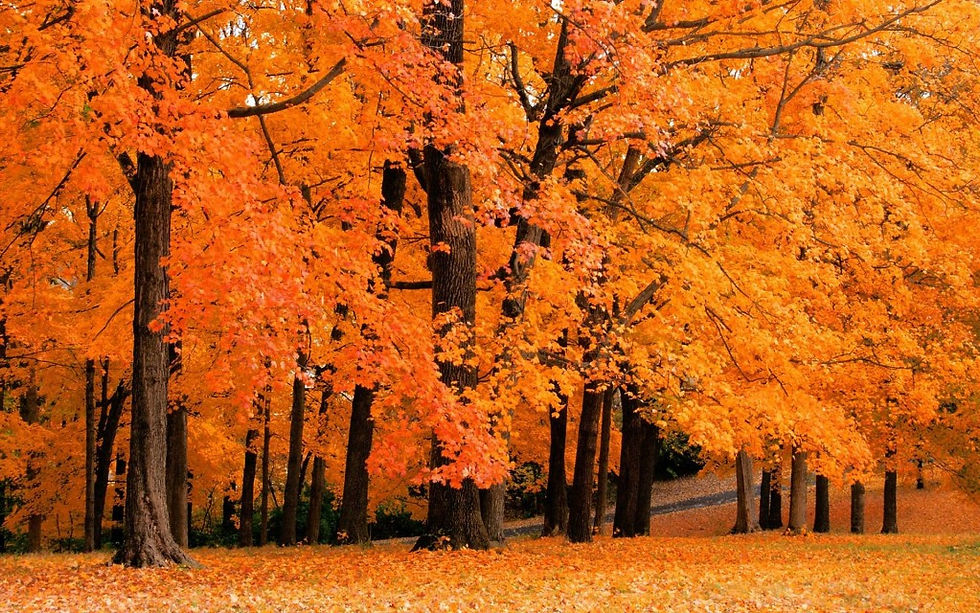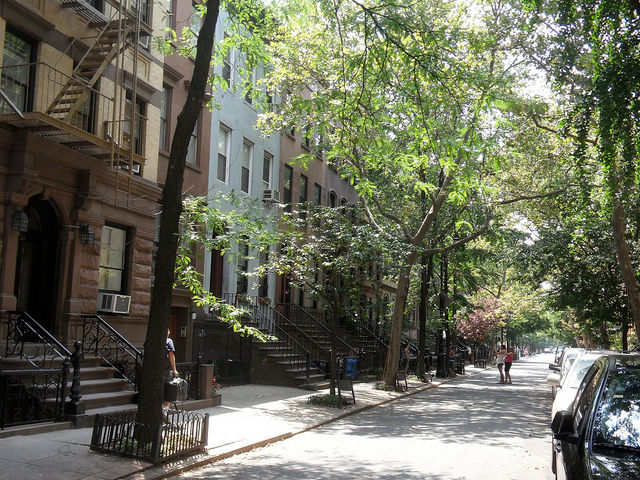10 reasons why trees are good.
- Henk De Vlaeminck
- 29 gen 2016
- Tempo di lettura: 4 min
Trees are part of our daily life as they are literally all around us. They are probably the most obvious expression of nature’s seasonal transformation through its beautiful changing colour scheme. However, apart from being an aesthetical masterpiece, do they really make a difference? Would it be possible to notice a measurable difference if my neighborhood had no trees at all or if few trees were added to the street I'm living in?

Here are 10 proven reasons why trees do make a difference in our life.
1. Trees produce oxygen and clean the air.
This is probably the most known characteristic of trees. We all learned at school how trees, like all green plants, produce oxygen through photosynthesis. A mature leafy tree produces as much oxygen in a season as 10 people inhale in a year.
Forests also act as a giant filter that cleans the air we breathe by intercepting airborne particles and absorbing pollutants like carbon monoxide, sulfur dioxide and nitrogen dioxide.
We therefore call trees “the lungs of the Earth”.
2. Trees improve water quality, reduce flooding and erosion.
Flash flooding can be dramatically reduced by planting trees. The tree’s leafy canopy catches precipitation before it reaches the ground, allowing some of it to drip gently and the rest to evaporate. Tree roots hold soil in place, reducing erosion and underground water-holding aquifers are recharged, reducing the amount of runoff into sewers, streams and rivers. In these ways, trees lessen the force of storms and improve the water quality. One mature trees can intercept almost 4 cubic metres of rainfall every year.
3. Trees reduce noise pollution.
Trees, planted at strategic points in a neighbourhood or around your house, can abate major noises from freeways and airports. A belt of trees 30 metres wide and 15 metres tall can reduce highway noise by up to 10 decibels, reducing the sound volume by half.
4. Trees temper climate.
Trees are probably best known for offering shade. Who does not appreciate the shadow of a tree in the middle of a parking lot on a hot summer day? They lower the air temperature and humidity. Evaporation of water from trees, or transpiration, has a cooling effect. Trees can also influence wind speed.
Three or more large trees strategically placed on sunny sides of a house shade it from the hot summer sun, reducing air-conditioning costs by as much as 30 percent. Deciduous trees are best for this use because they lose their leaves in winter, exposing the house to the warming winter sun, which lowers the energy needed to heat the house. Coniferous trees, because they retain their needles year-round, serve to reduce wind, resulting in significantly lower winter heating costs.
5. Trees increase property values and are good for the economy.
Real estate values increase when trees beautify a property or neighbourhood. Economic analyses have found that trees can increase the property value of your home by 9 to 15 percent.
Research shows that shoppers linger longer along a shaded avenue than one barren of trees and are even willing to pay more for goods and services.

6. Trees clean the soil.
The term phytoremediation means absorption of dangerous chemicals and other pollutants that have entered the soil. Trees can either store harmful pollutants or actually change the pollutant into less harmful forms. Trees filter sewage and farm chemicals, reduce the effects of animal wastes, clean roadside spills and clean water runoff into streams.
7. Trees create habitat for plants and animals.
Wherever trees are established, wildlife and other plants are sure to follow, ensuring a healthier ecosystem. Trees provide shelter and food for a variety of birds and small animals.
8. Trees improve both psychological and physical health.
Research demonstrates that exposure to trees has a relaxing effect on humans, reducing stress and imparting a sense of well-being. Hospital patients with a window view of trees recover faster than those without. Children with Attention Deficit Disorder are better able to concentrate after time spent in outdoor green settings.
9. Trees promote community.
Trees can enhance a community’s sense of pride, and ownership. Active involvement in tree planting programs leads to a stronger sense of community and the promotion of environmental responsibility and ethics. Planting programs also project a visible sign of change and provide the impetus for other community renewal and action programs.
10. Trees are useful in fighting global warming.
To produce its food, a tree absorbs and locks away carbon dioxide in the wood, roots and leaves. Carbon dioxide is a global warming suspect. A forest is a carbon storage area or a "sink" that can lock up as much carbon as it produces. One tree can sequester (or take in) more than one ton of carbon dioxide in its lifetime. Planting trees and avoiding deforestation are key measures in reducing the human impact on global climate change.
So the trees around us are the air that we breathe, the water that we drink, the soil we harvest on, the food that we eat. It is not a stretch to believe that without trees we humans would not exist on this beautiful planet. At the very beginning of our human experience, trees were considered sacred and honourable: oaks were worshiped by the European Druids, redwoods a part of American Indian ritual, baobabs a part of African tribal life, to the Chinese the ginkgo link and the monkey puzzle trees to the Chilean Pehuenche.
Trees are part of our history and will -necessarily- be part of future solutions for major challenges like gobal warming. Up to now, they are the only, scientifically proven, big-scale solution for reducing carbon dioxide, the main cause of global climate change. This is not a human invention, rather a belated discovery of nature’s stroke of genius. Maybe we need to reconsider the sacred values of our trees.



































Comentarios